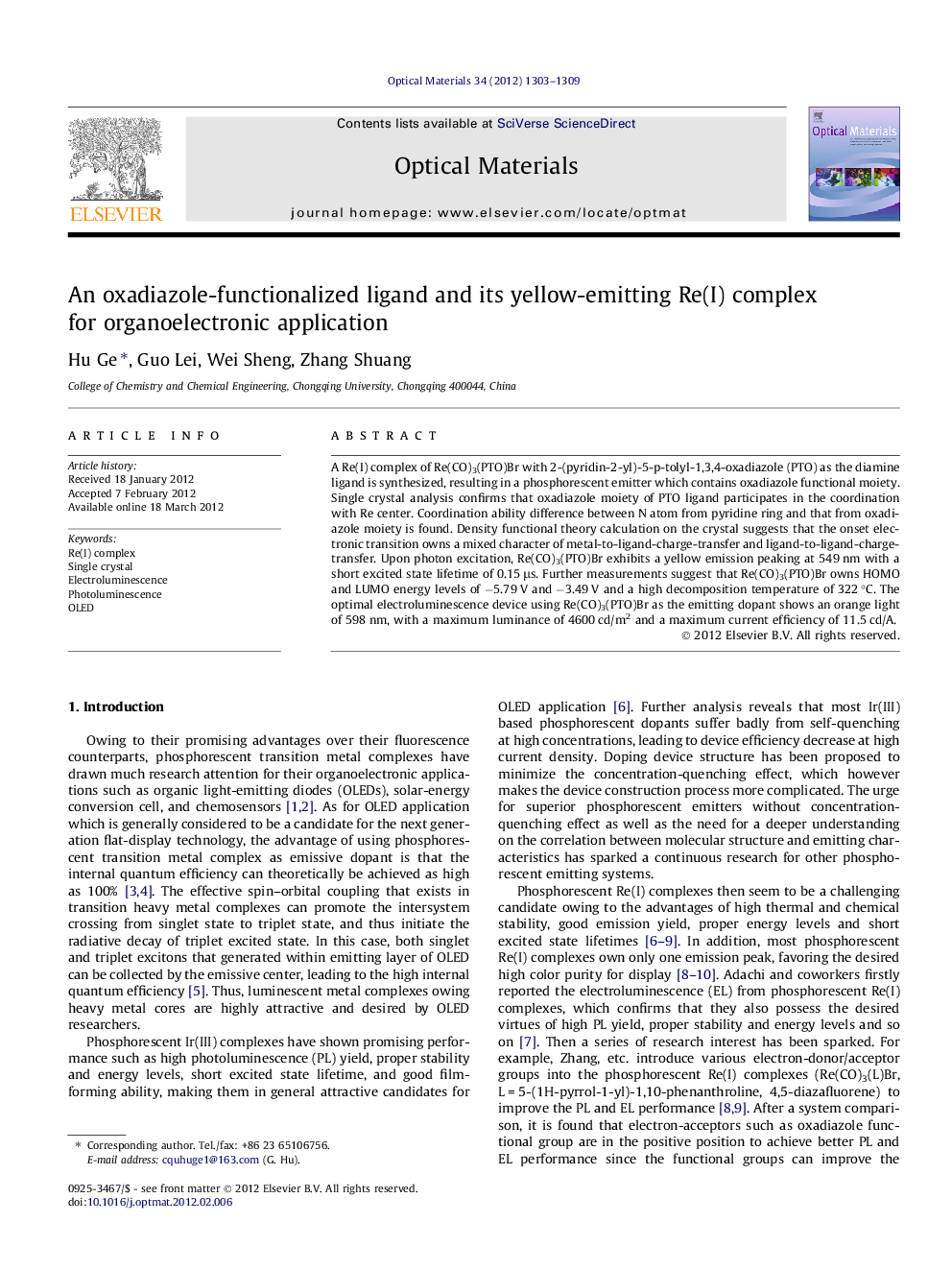| Article ID | Journal | Published Year | Pages | File Type |
|---|---|---|---|---|
| 1495025 | Optical Materials | 2012 | 7 Pages |
A Re(I) complex of Re(CO)3(PTO)Br with 2-(pyridin-2-yl)-5-p-tolyl-1,3,4-oxadiazole (PTO) as the diamine ligand is synthesized, resulting in a phosphorescent emitter which contains oxadiazole functional moiety. Single crystal analysis confirms that oxadiazole moiety of PTO ligand participates in the coordination with Re center. Coordination ability difference between N atom from pyridine ring and that from oxadiazole moiety is found. Density functional theory calculation on the crystal suggests that the onset electronic transition owns a mixed character of metal-to-ligand-charge-transfer and ligand-to-ligand-charge-transfer. Upon photon excitation, Re(CO)3(PTO)Br exhibits a yellow emission peaking at 549 nm with a short excited state lifetime of 0.15 μs. Further measurements suggest that Re(CO)3(PTO)Br owns HOMO and LUMO energy levels of −5.79 V and −3.49 V and a high decomposition temperature of 322 °C. The optimal electroluminescence device using Re(CO)3(PTO)Br as the emitting dopant shows an orange light of 598 nm, with a maximum luminance of 4600 cd/m2 and a maximum current efficiency of 11.5 cd/A.
► An oxadiazole functionalized Re(I) complex is synthesized and characterized. ► Crystal, electrochemical, emissive and thermal performances are studied. ► A short lived phosphorescence of 549 nm is observed. ► A maximum current efficiency of 11.5 cd/A is achieved.
